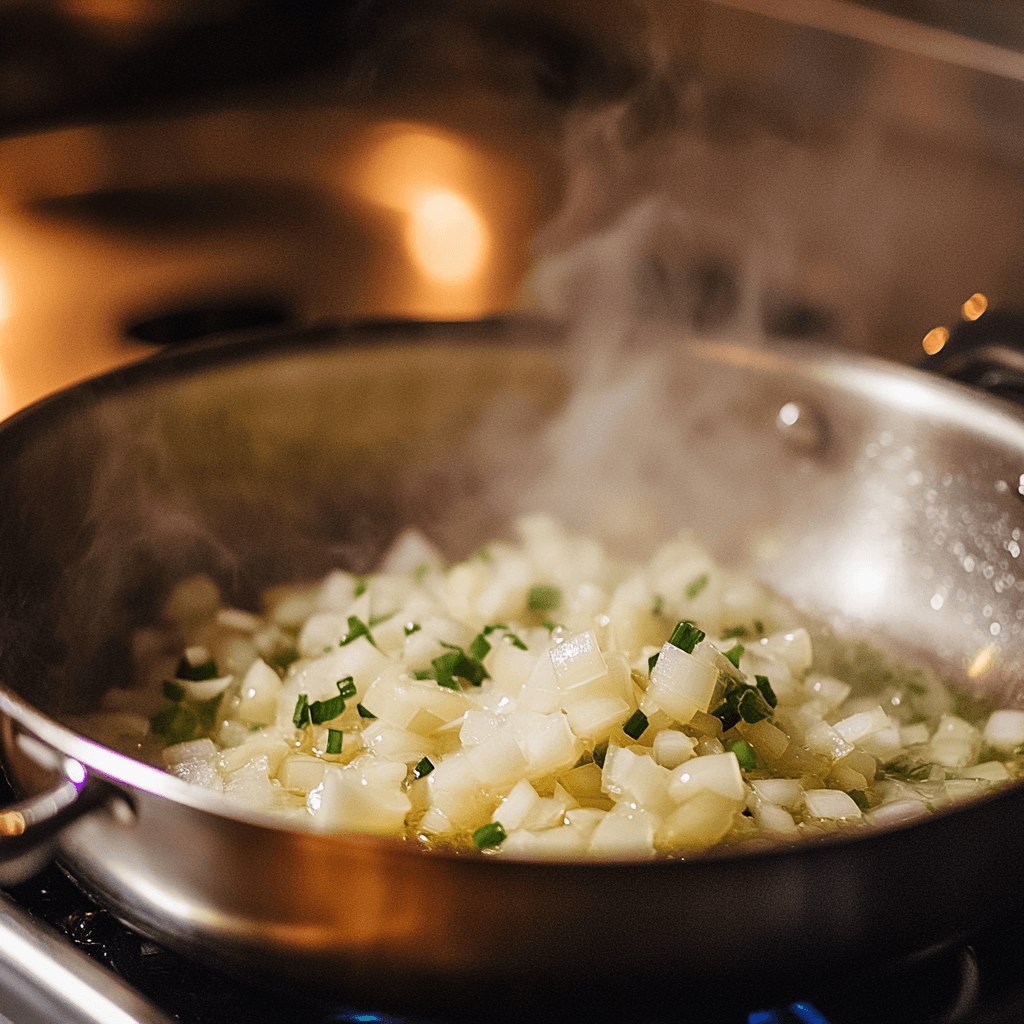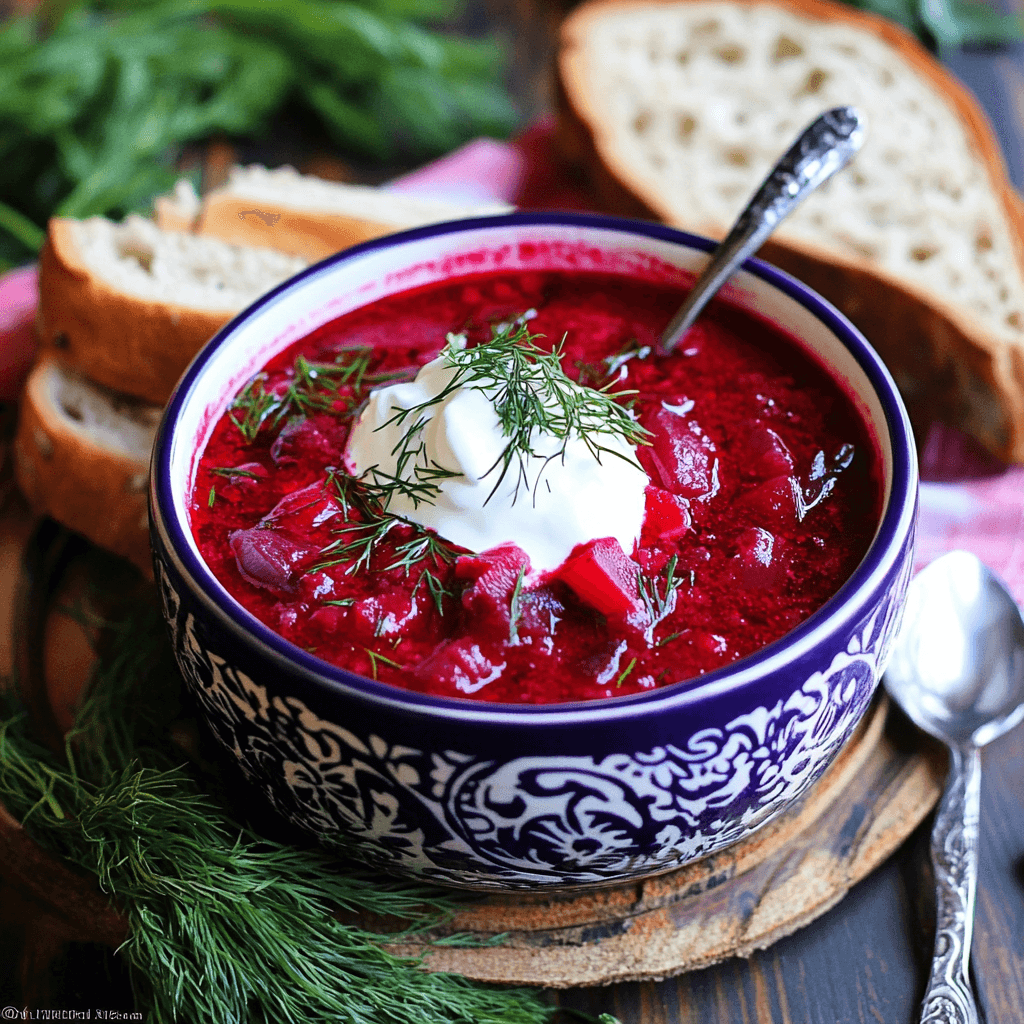Borscht is a hearty and flavorful Eastern European soup, with beetroot as its key ingredient. It has a rich history and is a staple across countries such as Ukraine, Russia, and Poland. Whether you prefer a vegan version or a meat-based variant, this dish is a perfect combination of taste and nutrition.
This classic soup not only provides comfort, but it also offers various health benefits. The main ingredient, beets, is loaded with essential nutrients such as vitamins, minerals, and antioxidants. If you want to dive deeper into the health benefits of beets, you can read more about it here.
What Are Borscht Recipes?
Borscht recipes are a cornerstone of Eastern European cuisine. This soup is traditionally made from beets, which give it its signature red color. Borscht can be served hot or cold, depending on the time of year. The soup is known for its versatility and can be made in many different ways, from vegetarian to meat-based.
To explore the cultural significance of Borscht, check out this detailed resource on the history of Borscht here.
Health Benefits of Borscht Recipes
Borscht recipes are packed with healthy ingredients, making them not only delicious but also nutritious. The primary component, beets, offer numerous health benefits, such as:
- Rich in Nutrients: Beets provide important iron, magnesium, folate, and fiber, which support digestion.
- Immunity-boosting properties: The soup’s vegetables, such as cabbage and carrots, are full of vitamins C and K, essential for boosting the immune system.
- Heart-health benefits: Beets have been shown to improve blood pressure and circulation, making Borscht a heart-healthy option.
With its wide range of nutrients, this soup can make a great addition to any diet.
Key Ingredients for Borscht Recipes
To prepare this traditional soup, you’ll need several core ingredients that contribute to its depth of flavor. Here are the essentials for Borscht recipes:
- Beets (the primary ingredient)
- Cabbage
- Potatoes
- Carrots
- Garlic and onions
- Dill and bay leaves
- Sour cream (for garnish)
- Meat (beef or pork) or vegetarian alternatives for a plant-based option
These ingredients come together to form a rich and satisfying meal that’s perfect for any occasion.
How to Make Classic Borscht Recipes: A Step-by-Step Guide
Making Borscht recipes from scratch is easier than you might think! Follow this simple guide to prepare a traditional, flavorful version:
Ingredients:
- 3 medium beets, peeled and grated
- 1 large onion, chopped
- 1 carrot, grated
- 1/2 head of cabbage, shredded
- 2 medium potatoes, diced
- 2 cloves of garlic, minced
- 6 cups vegetable or beef broth
- 1 tablespoon vinegar or lemon juice (to add acidity)
- Salt and pepper to taste
- Sour cream for garnish
Instructions:

- Prepare the beets: Grate the beets and set them aside.
- Cook the vegetables: In a large pot, sauté onions and garlic until soft. Add grated carrots, beets, and diced potatoes. Stir well and cook for 5 minutes.
- Simmer: Add the broth, shredded cabbage, and seasonings. Bring the soup to a boil, then reduce the heat and let it simmer for 45-60 minutes.
- Finish the soup: Stir in vinegar or lemon juice for a touch of acidity. Season with salt and pepper to taste.
- Serve: Ladle the soup into bowls and top with a dollop of sour cream and a sprinkle of fresh dill.
This traditional Borscht recipe is flavorful and simple to make. Start by grating beets and setting them aside. Sauté onions and garlic until soft, then add grated carrots, beets, and diced potatoes, cooking for 5 minutes. Next, incorporate broth, shredded cabbage, and seasonings, bringing the mixture to a boil before simmering for 45-60 minutes. Mix in vinegar or lemon juice for acidity, and season with salt and pepper. Serve in bowls, topped with sour cream and fresh dill.

Variations of Borscht Recipes
Borscht recipes are highly versatile, and you can adapt the recipe according to your preferences:
Vegan and Vegetarian Borscht Recipes
For those who follow a plant-based or vegan diet, it’s easy to make Borscht without meat. Simply replace the beef broth with vegetable broth and enhance the flavor with ingredients like tofu, beans, or additional vegetables.
Meat-Based Versions of Borscht Recipes
You can choose between beef or pork to make your Borscht. Beef gives it a rich, hearty flavor, while pork adds a lighter, slightly sweeter taste.
Sweet vs. Sour Borscht Recipes
A key feature of Borscht recipes is the balance between sweetness and acidity. Some prefer a sweeter version, while others enjoy a more sour flavor. You can achieve this by adjusting:
- For a sweeter soup, add a little sugar or apple.
- For a more tangy version, increase the amount of vinegar or lemon juice.
Both options offer distinct flavors that make this soup unique.
Serving Borscht Recipes
Borscht recipes are often served with a generous dollop of sour cream and a side of dark rye bread or garlic bread. These accompaniments complement the soup’s rich flavor. For added variety, consider pairing it with dumplings or a fresh salad.
Storing and Reheating Borscht Recipes
If you have leftovers, Borscht recipes can be stored in the fridge for up to 3 days, and the flavor improves over time. It’s also freezer-friendly for up to 3 months. When reheating, simply warm it up on the stove, and add more broth if necessary.
Common Mistakes to Avoid When Making Borscht Recipes
While preparing Borscht recipes is straightforward, there are a few common mistakes to avoid:
- Overcooking the beets: Be careful not to overcook them, as they can lose flavor and texture.
- Skipping key ingredients: Don’t omit essential components like garlic, dill, or sour cream, as they enhance the soup’s flavor.

FAQs About Borscht Recipes
How can I improve the flavor of my Borscht?
Adjust the sweetness and acidity to your taste by adding more vinegar or lemon juice.
Can Borscht Recipes be frozen?
Yes, Borscht recipes can be frozen for up to 3 months. Just be sure to reheat it gently to preserve its flavor.
How long does Borscht Recipes last in the fridge?
You can keep Borscht recipes in the fridge for up to 3 days. It often tastes even better after a day or two.
Can Borscht Recipes be made vegan?
Absolutely! Replace the meat with vegetable broth and add extra vegetables or beans for protein
How Blue Cheese Elevates Your Hamburger to Gourmet Perfection
New Orleans Shrimp and Corn Bisque: A Classic Cajun Comfort Food
“Pumpkin Soup: A Heart-Healthy Choice for Managing High Blood Pressure”
Clear Soup: A Delicious and Healthy Meal
PrintDelicious Borscht Recipes: Easy, Hearty, and Flavorful Variations You’ll Love
- Total Time: 1 hour 15 minutes
- Yield: 6 servings 1x
- Diet: Vegetarian
Description
Discover the best Borscht recipes with classic, vegan, and modern twists. Learn how to make this hearty Eastern European soup with easy recipes.
Ingredients
- 3 medium beets, peeled and grated
- 1 large onion, chopped
- 1 carrot, grated
- 1/2 head of cabbage, shredded
- 2 medium potatoes, diced
- 2 cloves of garlic, minced
- 6 cups vegetable or beef broth
- 1 tablespoon vinegar or lemon juice (to add acidity)
- Salt and pepper to taste
- Sour cream for garnish
- Fresh dill for garnish
Instructions
- Prepare the beets: Grate the beets and set them aside.
- Cook the vegetables: In a large pot, sauté onions and garlic in oil until soft. Add grated carrots, beets, and diced potatoes. Stir well and cook for 5 minutes.
- Simmer: Add the broth, shredded cabbage, and seasonings. Bring the soup to a boil, then reduce the heat and let it simmer for 45-60 minutes.
- Finish the soup: Stir in vinegar or lemon juice for a touch of acidity. Season with salt and pepper to taste.
- Serve: Ladle the soup into bowls and top with a dollop of sour cream and a sprinkle of fresh dill.
- Prep Time: 15 minutes
- Cook Time: 1 hour
- Category: Soup, Main Dish
- Method: Simmering, Sautéing
- Cuisine: Eastern European, Ukrainian, Russian
Nutrition
- Calories: 150
- Sugar: 10g
- Sodium: 500mg
- Fat: 2g
- Carbohydrates: 35g
- Fiber: 6g
- Protein: 4g




